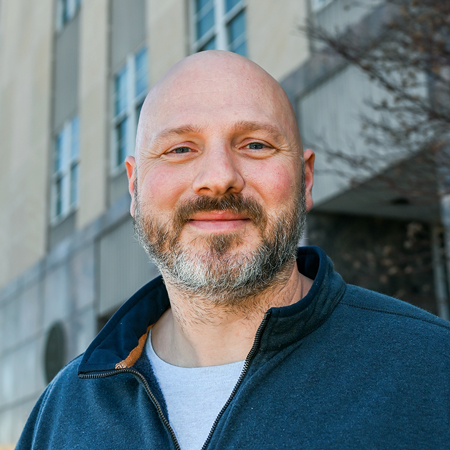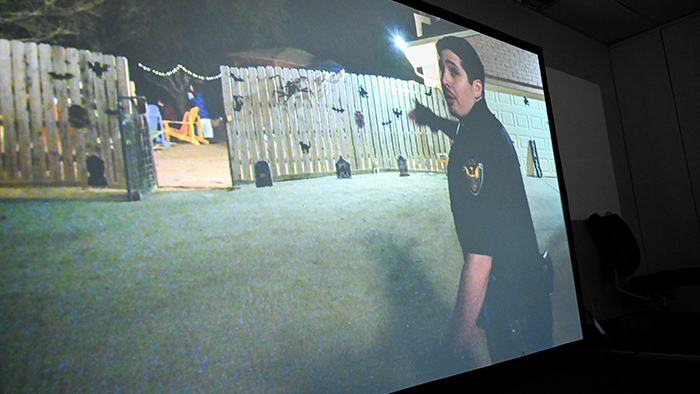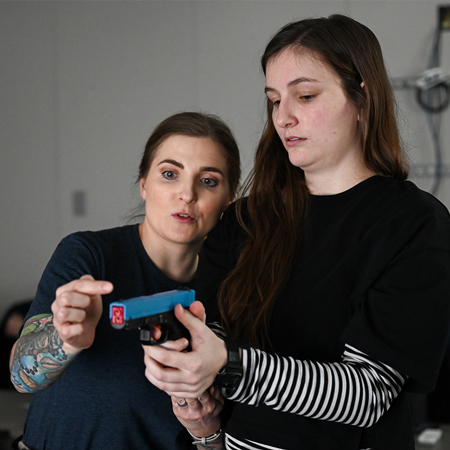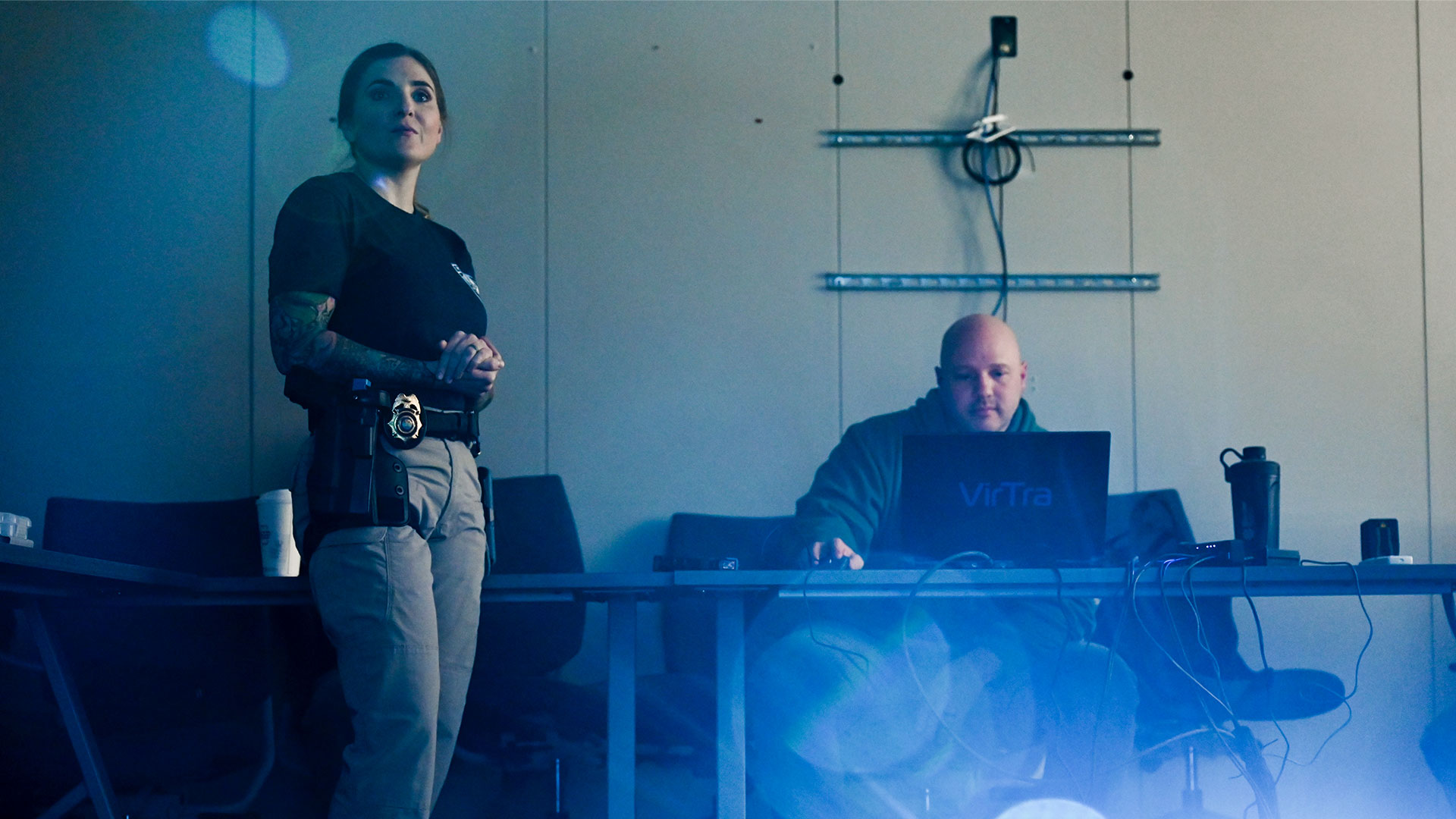
Rick Dierenfeldt, a former police officer turned academic, knows what it means to take a chance on people, unconventional ideas and the power of data-driven solutions.
“This is not a problem you arrest your way out of,” says Dierenfeldt, UC Foundation associate professor at UT Chattanooga, about combatting violent crime. “It’s a problem you build your way out of—with relationships, with trust and with strategies that actually work.”
Dierenfeldt spent more than a decade patrolling the streets in Northwest Missouri, an experience that shaped both his philosophy and his future. He saw firsthand how the absence of positive role models fed the cycle of violence—and how the presence of one could stop it.
“Most of the kids I encountered didn’t have a positive male role model,” he says. “Once they had someone in their life they didn’t want to disappoint, the cycle of violence often stopped.”
Now, as head of UTC’s Department of Criminal Justice, Dierenfeldt brings those lessons to the Violence Reduction Initiative (VRI), a research center launched in 2024 to address violent crime in Chattanooga and other areas.
That belief in people and potential informs every aspect of the VRI. The initiative focuses on applying research to real-world challenges, drawing on partnerships with law enforcement, city leaders and community organizations.
“We’re using trauma-informed strategies to reduce repeat offenses.”
—Rick Dierenfeldt
The seeds of the VRI were planted in 2020 when Dierenfeldt began working with the Chattanooga Police Department to evaluate the Scenic City Crime Gun Intelligence Center. His analysis of local firearm data led to a revelation: Many guns used in violent crimes had been involved in multiple offenses, even after the perpetrators had been arrested.
“The offenders were in custody, but the guns were still out there,” he says. “So we weren’t really closing cases. We were just closing files.”
Dierenfeldt’s recommendation to reconceptualize how case closure was defined led the police department to reopen more than 300 cases to track and seize those firearms. The result: a 27 percent drop in firearm homicides, a 36 percent decrease in overall homicides and a 42 percent reduction in shooting victims.
The project earned national recognition, including the Bureau of Alcohol, Tobacco, Firearms and Explosives’ Excellence in Crime Gun Intelligence Award. It also inspired a question: Could this model of data-driven collaboration work on a broader scale?

“What we did in Chattanooga wasn’t a statewide trend. It was a result of a specific approach—and we saw an opportunity to take it further,” he says.
With rapid support from UTC campus leadership, the VRI was born. The goal: Build lasting partnerships, secure external funding and deliver evidence-based strategies to reduce violence.
“UTC prides itself on doing research that matters,” says UTC Provost and Senior Vice Chancellor for Academic Affairs Jerold Hale. “The work that Dr. Dierenfeldt and the criminal justice department are doing is an important social issue that affects not only our community but every community.”
“The VRI is a great example of the synergy possible between campus and the community,” says Pamela Riggs-Gelasco, dean of the College of Arts and Sciences. “The research advances the academic discipline while also leading to improvements in the city of Chattanooga.”

Already, the VRI has attracted nearly $3 million in federal grant funding. In partnership with Hamilton County Alternative Sentencing Programs, a more than $844,000 grant from the Bureau of Justice Assistance was awarded for a project titled the Recidivism Reduction Initiative.
“We’re using trauma-informed strategies to reduce repeat offenses,” Dierenfeldt says. “A lot of individuals in the system have experienced significant trauma, and addressing that is key to rehabilitation.”
A second Bureau of Justice Assistance grant—nearly $2 million—came through a partnership with the city of Chattanooga for the CURV (Chattanooga United to Reduce Violence) initiative. The project employs community outreach, structured after-school activities and trauma-informed care to address violence in high-risk neighborhoods.
A particularly novel component of CURV is the use of “violence interrupters”—community members trained to mediate conflicts before they escalate.
“Some of these interrupters have histories with gang activity, which gives them credibility,” Dierenfeldt says. “They know where these paths lead, and they can stop cycles of retaliation before they start.”
In one case, he notes, a single shooting was linked to 22 subsequent violent incidents. “If you can intervene after the first one, that’s 22 tragedies that never happen,” he says.
“We took a chance on an idea, and that was to take a chance on people.”
—Rick Dierenfeldt
While the VRI offers important opportunities for faculty research, Dierenfeldt emphasizes its role as a training ground for the next generation of justice professionals. Graduate students and postdoctoral researchers are integrated into projects, gaining real experience with field data, community engagement and policy analysis. “We’re building a pipeline of practitioners and researchers who are ready to make an impact,” he says.
A recent investment in a VirTra training simulator has expanded the initiative’s resources, allowing students and researchers to engage with realistic law enforcement scenarios. The system challenges users to navigate high-pressure situations, sharpening their judgment, communication and response skills.
“We can use it to examine biases, decision-making speed and even physiological responses,” Dierenfeldt says. “It also helps students understand just how fast these situations unfold.”
The simulation offers more than 1,000 scenarios— from routine calls to active shooter events. Instructors can adjust outcomes based on verbal commands and responses, offering customized debriefings afterward. “We’re using it to study de-escalation techniques, which have historically been undertrained,” he says. “The possibilities are endless.”
It also adds an essential human element to the research. “You can give someone a survey and ask when police should use force,” Dierenfeldt says, “but it’s a different answer when they’re in the scenario themselves.”

For Dierenfeldt, the work is deeply personal. A second-generation police officer and first-generation college student, he initially left school during his sophomore year before returning at 26 to pursue an associate degree. A professor saw potential in him and pushed him to continue.
“He told me I was going to get my bachelor’s, then my master’s, then my Ph.D.,” Dierenfeldt recalls. “The best thing I ever did was listen.”
He earned his Ph.D. in 2016 in criminology and criminal justice from the University of Arkansas at Little Rock, writing a dissertation focused on the structural and cultural causes of urban gun violence. His career at UTC began in 2018.
Now, through the VRI, he’s paying it forward.
“We took a chance on an idea, and that idea was to take a chance on people,” he says. “Whether it’s a student, an offender trying to change or a community partner looking for solutions, we’re betting that research and relationships can create real change.”
The community seems to agree. Organizations once hesitant to collaborate with academia are now seeking partnerships. Local nonprofits, city agencies and law enforcement units are turning to the VRI for data and guidance.
“It’s about trust,” Dierenfeldt says. “They trust us because we’re not just sitting behind a desk. We’re in the community working with them, showing that it’s not just theory—it’s practice. Chattanooga still has work to do. But if we keep investing in people, keep building partnerships and keep trusting the research, I believe we can create something lasting.”



